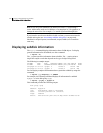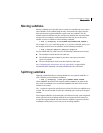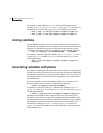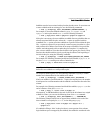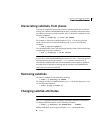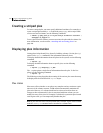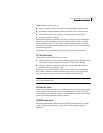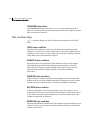
221Creating and administering subdisks
Dissociating subdisks from plexes
Dissociating subdisks from plexes
To break an established connection between a subdisk and the plex to which it
belongs, the subdisk is dissociated from the plex. A subdisk is dissociated when
the subdisk is removed or used in another plex. To dissociate a subdisk, use the
following command:
# vxsd [-g diskgroup] [-o force] dis subdisk
For example, to dissociate a subdisk named mydg02-01 from the plex with
which it is currently associated in the disk group, mydg, use the following
command:
# vxsd -g mydg dis mydg02-01
You can additionally remove the dissociated subdisks from VxVM control using
the following form of the command:
# vxsd [-g diskgroup] -o rm dis subdisk
Caution: If the subdisk maps a portion of a volume’s address space, dissociating
it places the volume in DEGRADED mode. In this case, the
dis operation prints a
warning and must be forced using the
-o force option to succeed. Also, if
removing the subdisk makes the volume unusable, because another subdisk in
the same stripe is unusable or missing and the volume is not DISABLED and
empty, the operation is not allowed.
Removing subdisks
To remove a subdisk, use the following command:
# vxedit [-g diskgroup] rm subdisk
For example, to remove a subdisk named mydg02-01 from the disk group, mydg,
use the following command:
# vxedit -g mydg rm mydg02-01
Changing subdisk attributes
Caution: Change subdisk attributes with extreme care.
The
vxedit command changes attributes of subdisks and other VxVM objects.
To change subdisk attributes, use the following command:
# vxedit [-g diskgroup] set attribute=value ... subdisk ...
Subdisk fields that can be changed using the vxedit command include:
■ name






